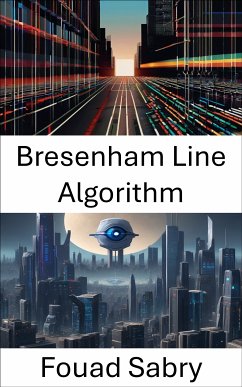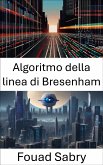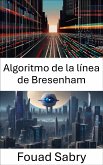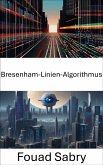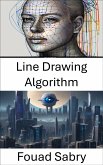What is Bresenham Line Algorithm
Bresenham's line algorithm is a line drawing algorithm that determines the points of an n-dimensional raster that should be selected in order to form a close approximation to a straight line between two points. It is commonly used to draw line primitives in a bitmap image, as it uses only integer addition, subtraction, and bit shifting, all of which are very cheap operations in historically common computer architectures. It is an incremental error algorithm, and one of the earliest algorithms developed in the field of computer graphics. An extension to the original algorithm called the midpoint circle algorithm may be used for drawing circles.
How you will benefit
(I) Insights, and validations about the following topics:
Chapter 1: Bresenham's line algorithm
Chapter 2: Line drawing algorithm
Chapter 3: Xiaolin Wu's line algorithm
Chapter 4: Digital differential analyzer (graphics algorithm)
Chapter 5: Midpoint circle algorithm
Chapter 6: Chain rule
Chapter 7: Derivative
Chapter 8: Slope
Chapter 9: Differential calculus
Chapter 10: Plotting algorithms for the Mandelbrot set
(II) Answering the public top questions about bresenham line algorithm.
(III) Real world examples for the usage of bresenham line algorithm in many fields.
Who this book is for
Professionals, undergraduate and graduate students, enthusiasts, hobbyists, and those who want to go beyond basic knowledge or information for any kind of Bresenham Line Algorithm.
Bresenham's line algorithm is a line drawing algorithm that determines the points of an n-dimensional raster that should be selected in order to form a close approximation to a straight line between two points. It is commonly used to draw line primitives in a bitmap image, as it uses only integer addition, subtraction, and bit shifting, all of which are very cheap operations in historically common computer architectures. It is an incremental error algorithm, and one of the earliest algorithms developed in the field of computer graphics. An extension to the original algorithm called the midpoint circle algorithm may be used for drawing circles.
How you will benefit
(I) Insights, and validations about the following topics:
Chapter 1: Bresenham's line algorithm
Chapter 2: Line drawing algorithm
Chapter 3: Xiaolin Wu's line algorithm
Chapter 4: Digital differential analyzer (graphics algorithm)
Chapter 5: Midpoint circle algorithm
Chapter 6: Chain rule
Chapter 7: Derivative
Chapter 8: Slope
Chapter 9: Differential calculus
Chapter 10: Plotting algorithms for the Mandelbrot set
(II) Answering the public top questions about bresenham line algorithm.
(III) Real world examples for the usage of bresenham line algorithm in many fields.
Who this book is for
Professionals, undergraduate and graduate students, enthusiasts, hobbyists, and those who want to go beyond basic knowledge or information for any kind of Bresenham Line Algorithm.
Dieser Download kann aus rechtlichen Gründen nur mit Rechnungsadresse in A, B, BG, CY, CZ, D, DK, EW, E, FIN, F, GR, H, IRL, I, LT, L, LR, M, NL, PL, P, R, S, SLO, SK ausgeliefert werden.

